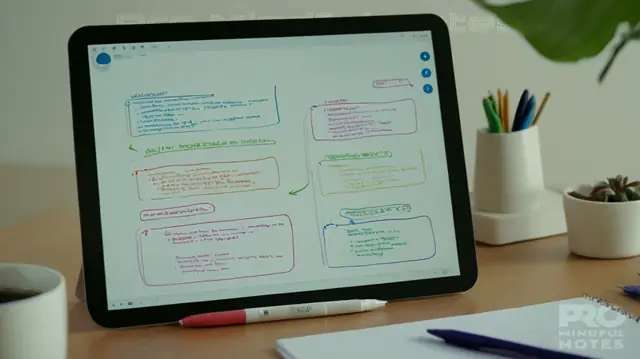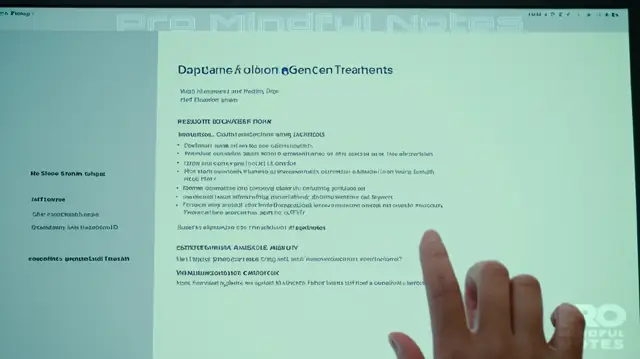Unlocking Efficient Therapy Documentation: Strategies, Tips & Best Practices for DAP Notes

In this article, we will delve into the world of DAP notes, a crucial aspect of therapy documentation that helps mental health professionals provide comprehensive and concise notes on client progress. We will explore the importance of using a structured format, such as the DAP note format, to ensure that all necessary information is captured in a single document. This includes the Data section, which outlines client reports, symptoms, and behaviors, followed by the Assessment section, where the clinician interprets the session's outcomes, and finally, the Plan section, which outlines actionable steps for the client.
Throughout this article, we will provide DAP case notes template examples to help you understand how to effectively use this format in your own practice. You'll learn how to write a DAP note sample, including tips on how to concisely document client progress and changes over time. We'll also touch on the meaning behind what are DAP notes, their importance in mental health documentation, and the benefits of using this structured approach.
Furthermore, we will discuss the various aspects of writing an effective DAP note example for substance abuse, case management, or therapy settings. You'll gain insights into how to utilize the data assessment plan example format to track client progress and make informed treatment decisions. Whether you're a seasoned therapist or just starting out in the field, this article will equip you with the skills to master the art of writing DAP notes, ensuring that your clients receive the best possible care while meeting the requirements of insurance companies.
- What are DAP notes and why are they important?
- The purpose of the Data section in DAP notes
- How to structure your Assessment section effectively
- Tips for writing concise and clear Plans in DAP notes
- Strategies for keeping your DAP notes organized and consistent
- Best practices for documentation: dos and don'ts
- Common challenges and mistakes to avoid in DAP note-taking
- Conclusion
- Video about Unlocking Efficient Therapy Documentation: Strategies, Tips & Best Practices for DAP Notes
What are DAP notes and why are they important?
DAP notes, which stand for Data, Assessment, and Plan, are a type of therapy documentation that provides a structured format for recording client sessions. This format is widely used in mental health settings to ensure thorough and consistent documentation of client progress. The primary goal of DAP notes is to provide a concise and organized summary of each therapy session, highlighting the key issues discussed, any assessments or observations made during the session, and the agreed-upon plan for future sessions.
In essence, a well-written DAP note serves as a snapshot of the client's progress at a specific point in time. It helps therapists to keep track of their client's symptom reports, self-harm, suicidal thoughts, and homicidal thoughts, among other important factors. Moreover, DAP notes play a crucial role in case management, as they allow for the development of informed treatment plans and facilitate collaboration between mental health professionals.
To create an effective DAP note, therapists must follow a specific format, often referred to as the DAP case notes template. The format typically includes sections for data, assessment, and plan, each serving a unique purpose. The data section captures objective information about the session, such as the client's presentation, symptoms reported, and mental status. In the assessment section, the therapist interprets the session's findings, making connections between the data collected and any relevant observations or assessments. Finally, the plan section outlines actionable steps for the client to take, including referrals to other professionals or organizations if necessary.
The purpose of the Data section in DAP notes

The Data section in DAP notes serves as a foundation for documenting essential information about the client's session, treatment, and overall mental health status. This crucial portion of the DAP note format aims to provide an objective account of what occurred during the session, without interpretation or analysis. By including key details such as the client's appearance, behavior, and self-reported symptoms, the Data section helps clinicians create a comprehensive picture of their Patient's experiences.
In this section, mental health professionals can include relevant information from the DAP case notes template, such as the client's reported stress levels, emotional state, and any changes in their physical or psychological well-being. The Data section also provides an opportunity for therapists to document relevant observations, including any notable shifts in mood, attitude, or behavior. By using a structured approach like DAP format example, clinicians can ensure that they are consistently capturing important details about each session.
A sample DAP notes example might include the following information:
- Client's appearance and behavior: "The client appeared anxious and fidgety during today's session."
- Reported symptoms: "The client reported feeling overwhelmed by their thoughts and emotions, with increased stress levels in the past week."
- Observations: "Noted a slight increase in the client's eye contact during our discussion."
By providing this foundational information, the Data section sets the stage for the subsequent Assessment and Plan sections of the DAP note.
How to structure your Assessment section effectively

To make the most out of the DAP format, it's essential to create a clear and concise Data, Assessment, and Plan section in your therapy notes. The assessment part is where you share your professional interpretation of the client's symptoms, behaviors, and overall progress. When writing your DAP note format, begin by summarizing the key points discussed during the session. This should include any notable changes or insights that have occurred since the last visit.
In this section, provide specific examples from the conversation that support your conclusions. For instance, if a client reports increased symptoms of anxiety, you could describe the triggers and coping mechanisms they've identified. By doing so, you'll create a comprehensive DAP case notes template that accurately captures the client's current state. Remember to be as objective and factual as possible when presenting your findings.
To further enhance your assessment skills, consider the following tips: * Use specific language when describing the client's symptoms or behaviors * Avoid making value judgments or subjective opinions about the client * Highlight any notable changes or trends observed during the session * Keep your descriptions concise and to-the-point
Tips for writing concise and clear Plans in DAP notes

When it comes to crafting a well-written Plan section in your DAP notes, clarity and concision are key. To achieve this, start by clearly articulating the client's treatment goals and objectives. This can be done by referencing previous sessions or assessments that have contributed to their current situation. Additionally, consider incorporating specific, measurable, achievable, relevant, and time-bound (SMART) goals that align with your assessment findings.
In your Plan section, prioritize concise language and focus on one or two main objectives for the next session or period. DAP note format guidelines emphasize brevity, so aim for a few sentences at most. For instance, if a client's goal is to manage anxiety symptoms through relaxation techniques, your Plan might state: "Continue practicing deep breathing exercises and progressive muscle relaxation for 10 minutes daily, with a goal of reducing reported anxiety levels by 25% within the next two weeks." This type of specific plan helps track progress and provides direction for future sessions.
When writing your Plan section, keep in mind that you're not only documenting your own thoughts but also providing a roadmap for other clinicians or professionals who may need to access the client's file. DAP case notes template can serve as a helpful guide, but remember to tailor your language and style to suit the specific needs of each client and treatment setting.
Strategies for keeping your DAP notes organized and consistent
To ensure that your DAP notes are both thorough and easy to read, it's essential to establish a clear format from the outset. Consider using a DAP note format or a DAP case notes template to guide your documentation. This will not only save you time but also reduce errors. For example, you might include sections for Data, Assessment, and Plan, as well as spaces for recording relevant details like dates, times, and treatment goals.
In addition to using a template, it's also important to be consistent in your note-taking approach. This means developing a DAP format example that you can use across all of your clients, with slight variations as needed to accommodate different individuals or situations. By doing so, you'll not only streamline your documentation process but also make it easier for colleagues to review and understand your notes.
When writing DAP notes, remember that the goal is to provide a clear and concise summary of each session. Aim for a DAP note sample that includes all the essential information, such as client reports of symptoms, assessment results, and treatment plans. By following a consistent structure and using a template or format guide, you'll be able to produce high-quality DAP notes that meet insurance company requirements and support your client's ongoing progress.
For mental health professionals working in substance abuse settings, developing effective DAP notes is especially important. This is because DAP notes play a crucial role in documenting client progress, tracking treatment goals, and communicating with colleagues and insurance companies. By mastering the art of writing DAP note examples, you'll be able to provide comprehensive and concise documentation that supports your client's recovery and well-being.
Best practices for documentation: dos and don'ts
When it comes to writing DAP Notes, it's essential to follow a clear and concise format. This not only saves time but also ensures that all relevant information is captured in a way that can be easily understood by other healthcare professionals. One of the most effective ways to achieve this is by using a pre-designed DAP Case Notes Template. This template should include sections for Data, Assessment, and Plan, as well as space for notes, observations, and any relevant documentation.
In terms of writing style, it's crucial to use clear and concise language when crafting your DAP Notes. Avoid using jargon or overly technical terms that may confuse the reader. Instead, focus on capturing the essential information in a way that is easy to understand. Additionally, be sure to include specific dates, times, and locations for each session, as well as any relevant details about the client's appearance, mood, and behavior. By following these guidelines, you can ensure that your DAP Notes are informative, yet concise, and provide a clear picture of the client's progress over time.
To further enhance the effectiveness of your DAP Notes, be sure to include specific examples and anecdotes that illustrate the client's progress. This could include quotes from the client themselves, as well as observations about their behavior, mood, or overall demeanor. By incorporating these types of details into your DAP Notes, you can provide a richer and more nuanced picture of the client's experience, which can be invaluable for both clinical and administrative purposes.
Remember to also follow best practices for documenting sensitive information, such as self-harm, suicidal thoughts, and homicidal thoughts. In cases where these issues are present, be sure to use discretion and only include necessary details in a way that respects the client's privacy while still providing essential documentation.
Common challenges and mistakes to avoid in DAP note-taking

One of the most common mistakes therapists make when writing DAP notes is failing to adhere to the DAP note format. While it's tempting to deviate from the structure, doing so can lead to confusion and difficulty tracking client progress over time. Another mistake is not providing enough detail or context in the Data section, leaving unclear what specific issues were discussed during the session. On the other hand, over-documenting can lead to excessive note-taking, wasting valuable time that could be spent on therapy sessions.
Another challenge is ensuring the Assessment section accurately captures the clinician's interpretation of the client's symptoms and mental status. This requires a thoughtful and nuanced approach to capture the complexities of human experience. When writing DAP format examples, therapists must strike a balance between concision and thoroughness, providing sufficient information to justify treatment decisions while avoiding excessive detail.
By being mindful of these common challenges and mistakes, therapists can avoid pitfalls like vague or incomplete notes that may not meet insurance company requirements or provide inadequate support for future treatment plans. By following best practices and utilizing templates such as the DAP case notes template or data assessment plan example, therapists can create comprehensive and concise DAP notes that accurately capture client progress and inform treatment decisions.
Conclusion
By implementing a comprehensive DAP Note Format, therapists can streamline their documentation process, ensuring that all necessary information is captured in a concise and organized manner. The DAP Case Notes Template provides a starting point for clinicians to structure their notes effectively, allowing them to focus on delivering high-quality therapy services rather than spending excessive time on documentation.
In this article, we have explored the benefits of using the DAP Format Example in mental health settings, highlighting its efficiency, brevity, and ability to track client progress over time. By following the Data Assessment Plan Example, clinicians can provide comprehensive and concise documentation that meets insurance company requirements. The Sample DAP Notes provided throughout this article serve as a guide for therapists looking to improve their documentation skills.
Incorporating the DAP Notes Meaning into your practice can have a significant impact on both the quality of care you provide and the efficiency of your documentation process. By following the guidelines outlined in this article, you will be well-equipped to create effective DAP Notes Sample, providing comprehensive and organized documentation for clients and insurance companies alike. Whether you are writing DAP Progress Note Example or DAP Case Note Examples, a solid understanding of the DAP Note Writing process is crucial for delivering top-notch mental health services.


Related Posts